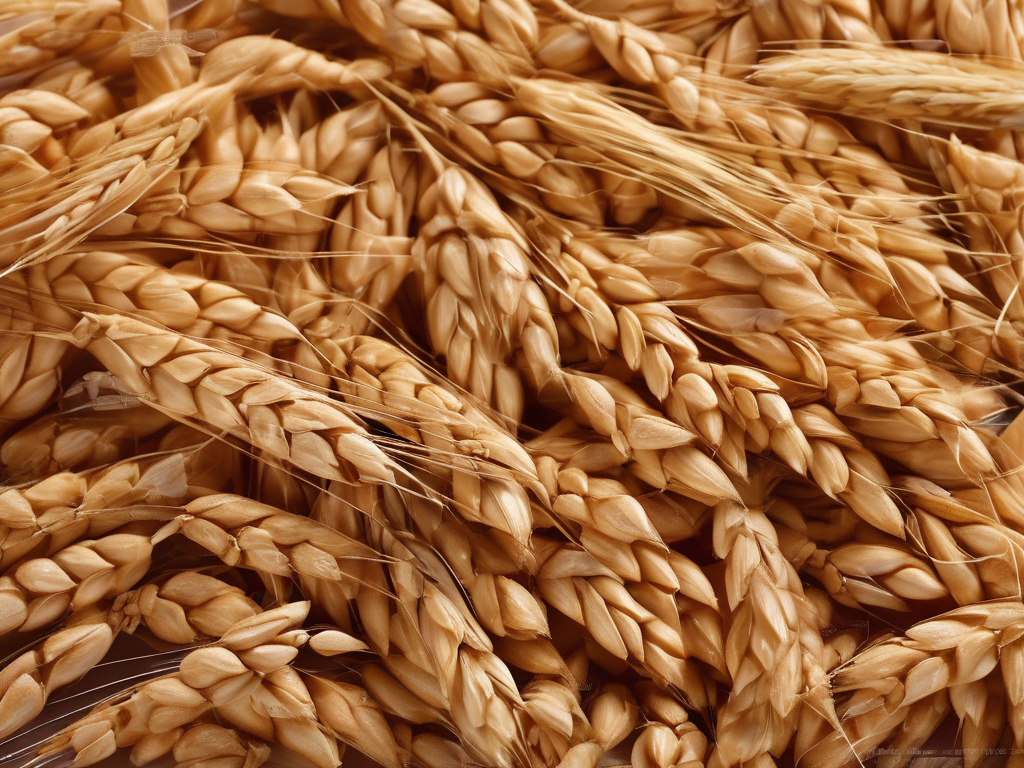
How to Tell if Hard Wheat Has Gone Bad
Get Your Free Food Safety Cheat Sheet
30 most common foods with instant answers. Print it and stick it on your fridge—completely free!
How to Tell if Hard Wheat Has Gone Bad
Hard wheat is a versatile and nutritious staple in many households, commonly used to make bread, pasta, and other baked goods. However, like any food product, hard wheat can go bad if not stored properly or if it's past its shelf life. In this blog post, we will discuss how you can tell if hard wheat has gone bad and provide you with practical tips on how to store it correctly to maximize its shelf life. (Hard wheat)
Understanding Hard Wheat
Before we dive into how to tell if hard wheat has gone bad, let's first understand what hard wheat is. Hard wheat, also known as durum wheat, is a type of wheat that is high in protein and gluten. It has a hard texture and is commonly used in making products like pasta and semolina flour. Hard wheat is known for its nutritional value and versatility in cooking.
[Hard wheat](/food/hard wheat)
Signs that Hard Wheat Has Gone Bad
When it comes to hard wheat, it's essential to be able to identify if it has gone bad to prevent any food safety risks. Here are some signs to look out for:
1. Visible Signs of Mold or Discoloration
- Check for any visible signs of mold on the hard wheat.
- Discard the hard wheat if you notice any black, green, or white patches of mold.
- Discoloration, such as a dull or off-color appearance, can also be an indicator that the hard wheat has gone bad.
2. Unpleasant Smell
- Give the hard wheat a sniff to check for any unusual or foul odors.
- If the hard wheat has a musty, sour, or rancid smell, it is likely spoiled and should be discarded.
3. Insects or Pests
- Inspect the hard wheat for any signs of insects, bugs, or pests.
- Presence of insects or their eggs indicates that the hard wheat is contaminated and should not be consumed.
4. Texture and Taste
- Check the texture of the hard wheat for any signs of clumping, stickiness, or unusual changes.
- Taste a small amount of the hard wheat to see if it has a stale or off-flavor.
5. Expiration Date
- Check the expiration date on the packaging of the hard wheat.
- If the hard wheat is past its expiration date, it is best to discard it, even if it shows no visible signs of spoilage.
Proper Storage Tips for Hard Wheat
To prolong the shelf life of hard wheat and prevent it from going bad, it's essential to store it correctly. Here are some practical tips for storing hard wheat:
1. Store in a Cool, Dry Place
- Hard wheat should be stored in a cool, dry place away from heat and moisture.
- Consider storing it in an airtight container or a resealable bag to protect it from humidity.
2. Avoid Exposure to Light
- Keep hard wheat away from direct sunlight and fluorescent lighting, as light exposure can cause the wheat to deteriorate faster.
3. Keep Away from Strong Odors
- Store hard wheat away from strong-smelling foods or chemicals, as it can absorb odors and affect its quality.
4. Rotate Stock
- Practice a first-in, first-out system when using hard wheat to ensure that older stock is used before newer ones.
5. Consider Refrigeration or Freezing
- If you live in a hot and humid climate, consider storing hard wheat in the refrigerator or freezer to extend its shelf life.
Conclusion
In conclusion, being able to identify if hard wheat has gone bad is crucial for food safety. By checking for signs of mold, unusual odors, insects, texture changes, and expiration dates, you can ensure that the hard wheat you consume is safe and of good quality. Additionally, following proper storage tips such as keeping hard wheat in a cool, dry place and away from light and strong odors can help prolong its shelf life. By practicing these simple guidelines, you can enjoy the nutritional benefits of hard wheat while minimizing the risk of consuming spoiled food. (Hard wheat)
Authoritative Food Safety References
These agencies and university labs inform every tip and health precaution we publish.
USDA FoodKeeper – Cold Storage Guidelines
Official refrigerator, freezer, and pantry timelines maintained by the U.S. Department of Agriculture.
Visit USDA FoodKeeperFDA Produce Safety Rule & Grower Guidance
Field-to-fridge handling practices that prevent contamination of fruits, vegetables, and leafy greens.
Visit FDA Produce SafetyCDC Foodborne Illness Prevention Hub
Surveillance-backed guidance on pathogens, symptoms, and steps to reduce foodborne illness risk.
Visit CDC Food SafetyUC Davis Postharvest Technology Center
University research detailing optimal storage atmospheres for produce after harvest.
Visit UC Davis PostharvestPenn State Extension – Home Food Preservation & Safety
Peer-reviewed extension bulletins on safe canning, chilling, and reheating practices.
Visit Penn State ExtensionGet Your Free Food Safety Cheat Sheet
30 most common foods with instant answers. Print it and stick it on your fridge—completely free! Want more? Upgrade to the complete guide with 70+ foods.
Scan your food directly and get instant safety info using our AI-powered camera feature.